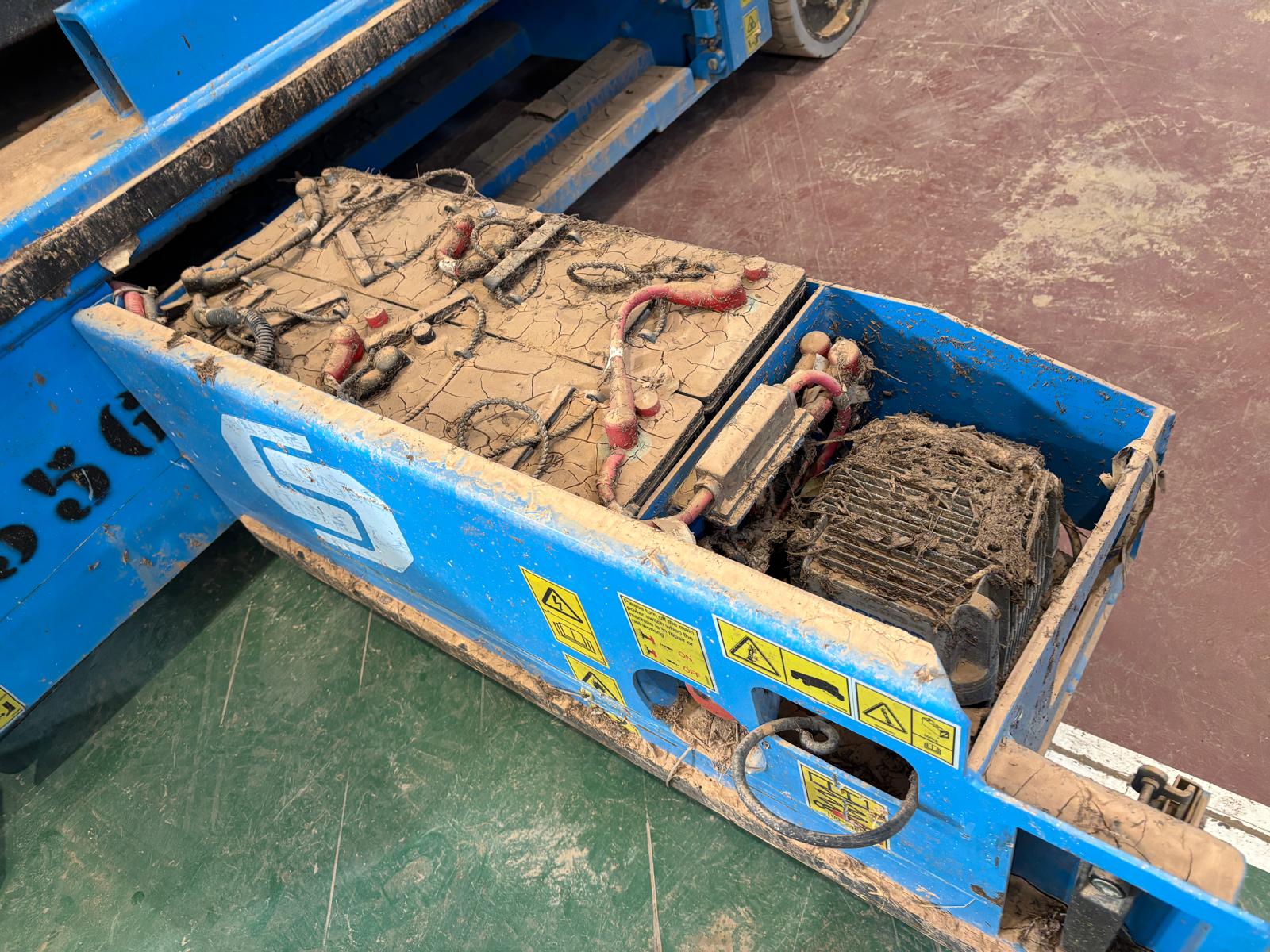A Case Study of Industrial Battery Performance in Valencia, Spain
Introduction
In late 2024, severe flooding in Valencia, Spain created an unplanned but revealing test of industrial battery durability. When heavy rains submerged several aerial work platforms under 1.5 meters of water and mud for three months, no one expected the equipment's batteries to survive. Yet when the platforms were finally recovered in January 2025, their Discover EV12A-A batteries not only remained intact but maintained an impressive charge. This case study examines how these batteries and their charging systems performed under these extreme conditions, offering valuable insights for industries operating in challenging environments.
The Natural Disaster
The flooding began on October 29, 2024, when Valencia experienced extraordinary rainfall exceeding 500 liters per square meter. To put this in perspective, this amount of rain in a single event is equivalent to what the region typically receives over several months. The deluge quickly overwhelmed local drainage systems, submerging industrial equipment including several Sinoboom aerial work platforms.
The flooding's severity meant that recovery teams couldn't access the equipment for approximately three months. During this time, the platforms remained underwater in conditions that would typically spell disaster for electrical systems - sustained exposure to water, mud, and potential electrical shorts.
The Equipment at Risk
The submerged equipment included two types of aerial work platforms: the Sinoboom 4047E and 4655E models. These machines, essential for construction and maintenance work, rely on sophisticated battery systems for operation. Each platform was equipped with Discover EV12A-A batteries, which are specialized industrial batteries designed for demanding applications.
To understand the significance of the batteries' survival, it's important to know their design specifications:
The Discover EV12A-A is not your typical battery. It's a 12-volt DRY CELL AGM (Absorbed Glass Mat) Traction battery, engineered specifically for industrial applications. These batteries feature several key characteristics that proved crucial in their survival:
- A rugged polypropylene case that provides robust physical protection
- IP66 rating, meaning they're completely sealed against dust and protected against powerful water jets
- Operating temperature range from -40°C to 50°C for discharge
- 145 amp-hour capacity, providing substantial power reserves
- Advanced pressure relief valves and flame arrestors for safety
The charging system, a GPD GPSC3024 charger, is equally robust. It features IP67/66 protection rating and can handle input voltages from 85V to 265V, with built-in protection against voltage surges up to 420V.

The Surprising Discovery
When recovery teams finally accessed the equipment in January 2025, they expected to find destroyed batteries and electrical systems. Instead, they found something remarkable:
- The battery pack maintained a voltage of 23.92V after three months underwater. For context, this indicates minimal discharge despite the extreme conditions. A typical battery exposed to such conditions would often show significant voltage drop or complete failure.
- The charging system remained functional. When tested, it successfully delivered a charging current of 29A, nearly at its maximum capacity of 30A. This demonstrated that not only had the batteries survived, but their charging circuits remained intact.
- Perhaps most surprisingly, the aerial work platforms themselves were operational. This meant that the batteries had maintained sufficient integrity to power complex electrical systems.
Understanding the Success
Several design features contributed to this remarkable survival.
The Battery's Defense Systems:
- The polypropylene case acted as the first line of defense, preventing water infiltration
- The AGM technology meant there was no free liquid electrolyte to dilute or contaminate
- Precision pressure relief valves prevented water ingress while allowing necessary venting
- The maintenance-free design eliminated potential points of water entry
The Charger's Protection:
- IP67/66 rating ensured protection against both dust and prolonged water immersion
- Surge protection capabilities prevented electrical damage during flooding
- Multiple charging curves allowed the system to adapt to the batteries' post-flood condition
Business Implications
This real-world stress test has significant implications for industries operating in challenging environments:
Equipment Protection: The batteries' survival meant that expensive aerial work platforms worth thousands of dollars were saved from what could have been a total loss. This demonstrates the value of investing in high-quality battery systems as a form of equipment protection.
Disaster Recovery: Quick recovery after natural disasters is crucial for businesses. The ability of these batteries to remain operational after extreme flooding means reduced downtime and lower replacement costs.
Conclusion
The Valencia flood case study demonstrates that modern industrial batteries can survive conditions far beyond their typical operating parameters. The Discover EV12A-A batteries and GPD GPSC3024 charger showed that proper engineering and robust design can create resilient systems capable of withstanding extreme environmental challenges.
For industries operating in areas prone to natural disasters or harsh conditions, this case study provides compelling evidence for investing in high-quality battery systems. The initial cost of premium batteries may be higher, but their ability to survive extreme conditions and protect valuable equipment can provide significant long-term value.
Note: This case study is based on actual events and technical measurements taken after the Valencia floods of 2024. All specifications and performance data have been verified through technical documentation and post-incident testing.






